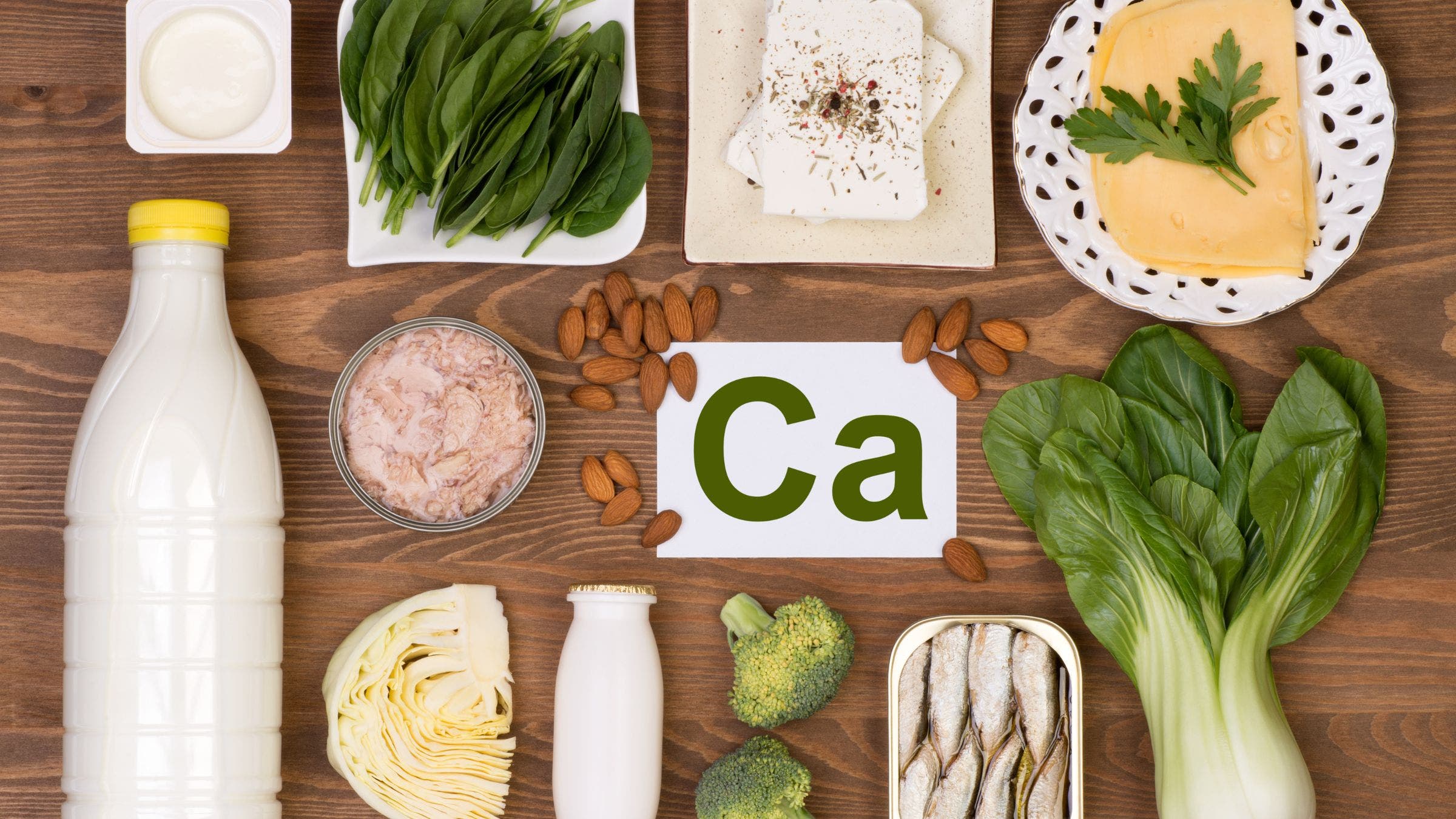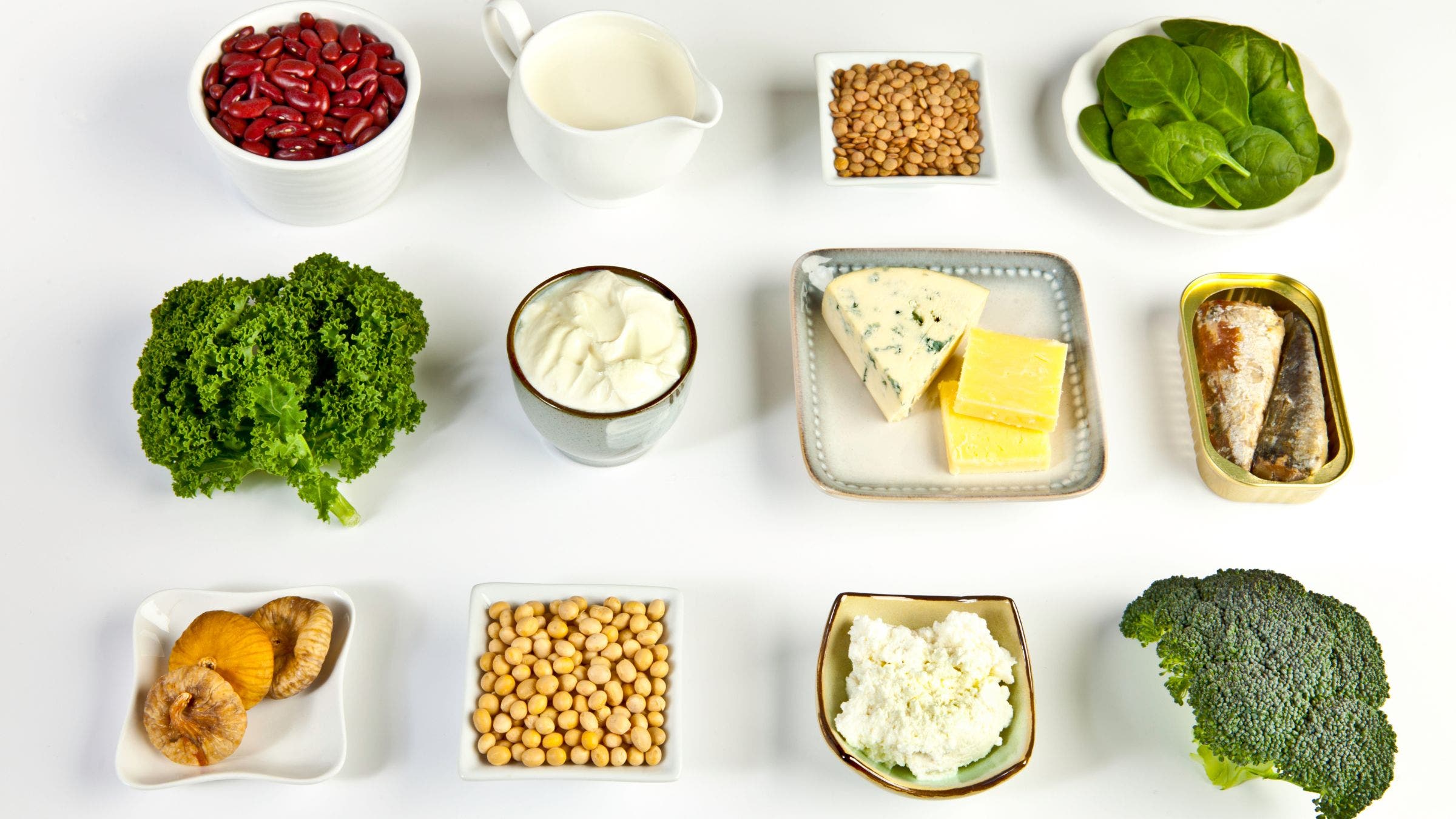What Endurance Athletes Need to Know About Calcium

(Photo: Getty Images)
Calcium for athletes
When it comes to nutrition, we seem to be hearing so much about protein, fiber, vitamin D and heart-hero omega-3 fats. Every day, athletes are being bombarded with online and podcast rantings about the importance of getting enough of these in the diet – to the point that you would think that if you aren’t pounding protein shakes, your muscles will shrivel like raisins and if you are skimping on fiber, your gut will implode. Yet the information cacophony on the virtues of calcium is much, much less.
This is a shame when you consider how important calcium is to our health and lasting sporting performance. Perhaps the ho-hum approach to calcium is why there is so much confusion about this micronutrient and why so few people get enough. (Spoiler alert: Simply spiking your morning brew with a splash of milk won’t cut it.)
Read on to learn the answers to several pressing questions including why calcium can help keep you in tip-top shape, and how to go about taking in enough every day.
Why is calcium important?
There should be little debate about calcium’s role in building break-resistant bones, as roughly 98% of the body’s calcium stores are found in your bones. If adequate calcium is not consumed in the diet, the mineral can be removed from bones to help meet other needs in the body, and over time they can grow weaker. In this sense, our bodies use the bones as a reservoir for, and source of, calcium to maintain homeostasis in the body.
Some data suggest that triathletes are at a higher risk for stress fractures than the general public, and coming up short in calcium isn’t likely to help the situation. Nothing can put a dent in training and race aspirations quite like a stress fracture.Our bones undergo continuous remodeling so there is a need for a consistent source of calcium to optimize this process.
But calcium is so much more than a one-hit wonder. You need the mineral to optimize muscular contraction (athletes take note), secretion of hormones, nervous system functioning, blood vessel dilation and blood clotting, according to the National Institutes of Health. This recent study in the American Journal of Clinical Nutrition investigated the link between nutrients that are typically under-consumed in America and mortality risk; it determined that when calcium is consumed in amounts suggested by the Recommended Dietary Allowance (RDA), the risk for death from cancer is lowered. Another recent study review found a link between calcium intake and a reduced risk for colorectal cancer, while this investigation suggests getting enough calcium can help lower the chances of developing prostate cancer.
To date, however, there have not been any adequate studies to directly link calcium in the diet with exercise performance.
How much calcium do I need each day?
A steady supply of dietary calcium is a must if you want to make sure the deposit of calcium in your bones keeps up with its withdrawal.
The Recommended Dietary Allowance (RDA) for calcium is 1,000 milligrams a day for women up to age 50 and men up to age 70. Over 50, female athletes should aim for 1,200mg daily as there is an increase in bone remodeling due to decreased estrogen production when menopause commences. Levels many people struggle to achieve, especially those who are shunning dairy and not making sure to eat enough from the alternatives. Dietary surveys suggest a large percentage of Americans are falling short of calcium intake on most days.
This recommended intake level is based on the assumption that we absorb an average of 30 percent of the calcium from our diets, which roughly is what is the absorption rate from dairy. So our biological need for calcium is around 250 to 300 milligrams per day.
There is no scientific evidence that athletes require higher amounts of calcium than the general public.
How can I tell if I am calcium deficient?
Over time, calcium deficiency can reduce bone strength and lead to osteoporosis, which is characterized by fragile bones. Signs of severely low calcium can include numb, tingling fingers, muscle spasms and abnormal heart rhythms. That said, there are no short-term, obvious symptoms of calcium deficiency. This is why so many people continue to consume insufficient amounts of calcium without knowing.

What are the best sources of calcium for endurance athletes?
Ask a random group of people on the street what food comes to mind when you say “calcium” and it’s likely most people will say “dairy.” In America, dairy including milk, cheese and yogurt is a big contributor to calcium intake for many people. But beyond this food group, there are several different animal- and plant-based foods that contain calcium giving you several options in your quest. Here are some of the top sources:
| Food | Calcium (mg) |
| Almonds (1/4 cup) | 96 |
| Almond milk, calcium fortified (1 cup) | 450 |
| Beet greens, cooked (1 cup) | 164 |
| Black beans (1 cup) | 103 |
| Breakfast cereals, calcium fortified (1 cup) | 130-1000 |
| Bok choi/pak choi, raw (1 cup) | 74 |
| Broccoli, raw (1 cup) | 43 |
| Canned salmon, with bones (3 ounces) | 181 |
| Canned sardines, with bones (3 ounces) | 325 |
| Cheddar cheese (1/2 cup, cubed) | 467 |
| Chia seeds (1 oz) | 179 |
| Cottage cheese, low fat (1 cup) | 125 |
| Edamame (1 cup) | 98 |
| Feta cheese (1/2 cup) | 370 |
| Figs, dried (1 cup) | 241 |
| Hemp seeds (3 tbsp) | 20 |
| Kale, raw (1 cup) | 24 |
| Milk, 1% fat (1 cup) | 305 |
| Mozzarella cheese (1/2 cup shredded) | 308 |
| Orange juice, calcium fortified (1 cup) | 349 |
| Rhubarb (1 cup) | 105 |
| Sesame seeds (1 tbsp) | 88 |
| Sour cream (1 tbsp) | 17 |
| Soymilk, calcium fortified (1 cup) | 300-350 |
| Spinach, raw (1 cup) | 30 |
| Tofu, firm, made with calcium sulfate (1/2 cup) | 434 |
| Yogurt, plain, low-fat (6 oz) | 311 |
Remember, the amount of calcium you see here is not the total amount you’ll get. Absorption rates vary among foods and drinks. Also, calcium content can vary a fair amount in foods based on several factors such as growing conditions, soil quality, processing methods and fat content. Calcium content varies slightly by fat content; the more fat in the food such as yogurt, the less calcium it contains. But it’s not a huge difference.
When cartons of calcium-fortified beverages such as almond milk sit on the shelf, the calcium can separate out. Give them a very good shake before each pour.
If you’re eating yogurt, splurging for organic may give you a calcium boost. This study in the journal Nutrients discovered that the calcium content of organic yogurt was greater than that of conventional options. Changes in how dairy cattle are fed and raised may result in their milk being more calcium dense.
The quantity of calcium you can obtain from supplements varies widely; multivitamin/mineral supplements commonly contain about 200 to 300 mg, and common amounts in stand-alone calcium are 500 to 600 mg. The two most common forms of calcium in supplements are calcium carbonate and calcium citrate, with not enough research to suggest one is better than the other. You may also come across supplements including greens powders that glean their calcium from aquamin, which is derived from seaweed and contains other minerals including magnesium. Calcium levels of aquamin will vary (the amount you are getting should be stated on the label) and whether it has superior bioavailability remains to be determined. Absorption of any calcium, from a supplement, however, is better when taken with food.
Is it true that calcium is poorly absorbed from some foods?
Calcium absorption fluctuates by type of food. The absorption of calcium from dairy products and fortified foods like juices is about 30 percent. Certain compounds in plants (e.g., oxalic acid, phytic acid) can decrease calcium absorption by forming indigestible salts with calcium, decreasing its absorption. For instance, the absorption of calcium is only 5% for spinach. Other calcium-containing foods with high levels of oxalic acid include beans, almonds, beet greens, collard greens, Swiss chard, soy, potatoes, and rhubarb. Kale and bok choy may have less calcium per serving than spinach, but we absorb more of the mineral from it because it is lower in oxalic acid. The bioavailability of calcium from plants that contain negligible amounts of these compounds—including kale, broccoli, and cabbage—is similar to that of dairy, although the amount of calcium per serving is much lower.
But the importance of binding plant compounds like oxalic acid on human nutrition is greatly reduced when someone eats a varied diet with several different sources of calcium. And also employs different preparation methods – cooking and soaking can reduce levels of these so-called “anti-nutrients.” The problem arises when you zero in on a specific food like spinach for your primary source of the mineral.

Should I take bigger doses of calcium?
Some people believe that if some of a nutrient is good then getting a lot more must be really great. It’s not that simple. For calcium, it is important to know that an inverse relationship exists between calcium intake and absorption. Absorption of calcium from food is roughly 45% at intakes of 200 mg/day but declines to 28% of a 1,000 mg dose and 15% when intakes are higher than 2,000 mg/day. So this is a case of diminishing returns, though there is bound to be some individual variability. Our bodies do a pretty good job at making sure it gets the calcium it needs from the diet but not too much, so absorption rates are tightly regulated. However, the net absorption of calcium from food and supplements typically declines as we age. That means a higher total calcium intake might be needed to reach an adequate level.
Also, if your plan is to load up on calcium at any single meal – say, at breakfast where you eat a serving of two of dairy and pop a pill, then you may not be getting the full benefit of the micronutrient. That’s because the body can absorb only about 500 mg of calcium at once. It’s best to eat bursts of calcium spread throughout the day.
Does going plant-based put me at risk of calcium deficiency?
It does if you’re not careful about what you eat and it certainly could be easier to reach the intake goal for calcium if a few daily servings of dairy like milk and yogurt are part of your diet. A systematic review published in the journal Nutrients involving 141 observational and intervention studies published between 2000 and January 2020 determined that the consumption of calcium was generally lower in vegans and vegetarians compared to meat-eaters. Vegans who will consume no dairy had the lowest vitamin calcium. However, people who consumed animal-based foods were also found to be at risk for inadequate calcium intake. This research review in the Journal of the International Society of Sports Nutrition believes that calcium is a nutrient of concern for vegan athletes.
With this said, as long as a person on a plant predominant or plant-only diet is making sure to eat sufficient amounts of calcium-containing foods like fortified non-dairy milks and calcium-set tofu then it is certainly possible to get enough. And vegans who follow a well rounded diet that includes adequate calcium have not been consistently shown to be at a greater risk of weak bones and osteoporosis.
Should endurance athletes take calcium supplements?
There are a few reasons to suggest that it’s best to take a food-first approach to calcium.
Despite the importance of calcium in bone health, evidence is mixed on the link between calcium supplementation and bone benefits. One reason is that the strength of our bones is reliant on several nutrients, not just calcium. These include vitamin K, vitamin D and phosphorus. You also need adequate amounts of protein in the diet for optimal bone strength. So to think that if you load up on calcium via supplementation (or just from dairy) and you’ll stave off weak bones is misguided. Some studies also involve people consuming high amounts of calcium but not taking part in regular weight training which is crucial to maintaining and improving bone mineral density. This small study found that male cyclists who supplemented with calcium and vitamin D did not reduce some of the loss of bone density that can occur when athletes are focused solely on endurance activities. This is more evidence of the importance of incorporating resistance training in a fitness program. The benefits of supplementation appear to be more pronounced in older individuals, especially when paired with vitamin D.
An upper limit for calcium for most adults is 2,500 mg, above this could raise the risk for hypercalcemia which can increase the chances of heart problems. For some people taking in huge amounts of calcium raises the likelihood of developing painful kidney stones.
Certainty, a calcium supplement can make it easier to get what you need. But go easy. Going overboard on calcium from supplements, which is much easier to do than through foods and drinks, could result in some health concerns, particularly for your ticker. Take, for example, an investigation in the Journal of the American Heart Association which discovered that those taking calcium supplements over a 10-year period had a 22 percent higher risk of plaque buildup in their arteries than participants obtaining all their calcium from food sources. As calcium-based plaque builds up in the arteries it can impede blood flow and increase heart attack risk. The concern is that a high dose of calcium from a supplement doesn’t make it all to the skeleton and the excess is not fully excreted in the urine, so it accumulates in the arteries. On the flip side, calcium from food such as milk and broccoli is believed to be metabolized differently and absorbed into the bloodstream in smaller amounts throughout the day so there is less chance of it clogging up your arteries.
Still, a report in the Annals of Internal Medicine suggests there is not enough evidence that calcium intake from food and supplements below the tolerable upper level of intake (2,000 to 2,500 milligrams a day) should be considered unsafe from a cardiovascular standpoint.
The upshot is that you should try to get what you need from your diet, but if you don’t think you are nailing your calcium needs from food alone then bridging the gap with a supplement is perfectly acceptable, but be cautious with how much you are taking. And if you take a multivitamin, remember that there is likely some calcium in there as well.